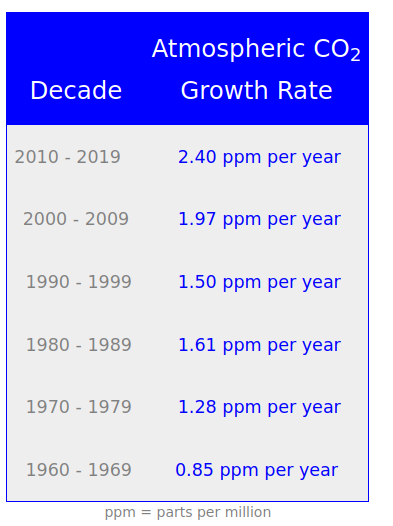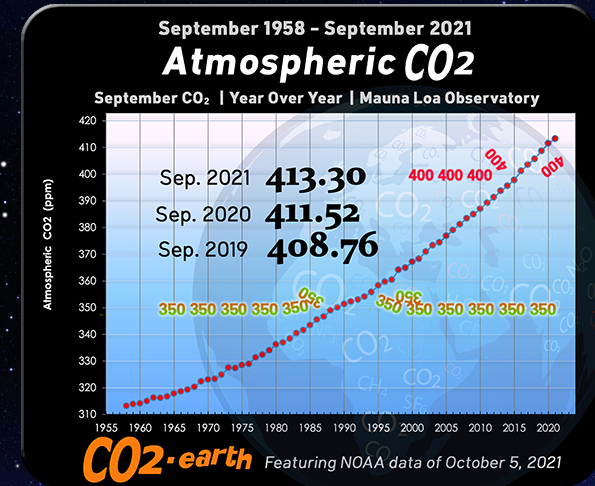
Source https://www.co2.earth/co2-acceleration
UNFCC started holding what was designed to be an annual series of climate conventions or COPs (the oddly named Conference of the Parties). The first was in Berlin in 1995.
Then we had Geneva (COP2 1996), and Kyoto (COP3 in 1997), which produced the ineffective Kyoto protocol, due to come into force in 2008.
Many more air miles were logged up with COP4 (Buenos Aires, 1998), COP5 (Bonn, 1999), COP6, The Hague, 2000, COP7 (Marrakech, 2001), COP8 (Delhi 2002), COP9 (Milan, 2003), COP10 (Buenos Aires, 2004), COP11 (Montreal, 2005) and COP12 (Nairobi, 2006).
COP13 in Bali (2007) re-arranged the deckchairs on the Titanic that is CO2 increase in the atmosphere, then COP14, in Poznan, and COP15 (2009) in Copenhagen, sought to transfer climate beneficial technology to third world countries (ask the Chinese how they think that's going). Scientists slapped themselves on the back for a job well done, especially those scientists who couldn't read a graph like the CO2 one below.
COP16 (2010) in Cancun (Mexico, not the French dance with frilly knickers) created a Green Climate Fund. You can see how well that's going because that's more or less the point when CO2 emissions started to increase at the fastest rate ever. COP17 was held in Durban, South Africa. The least said about that one the better.
COP18 (in 2012) was in Doha, Qatar, so at least the delegates got to experience what climate change might look like.

Source: https://www.co2.earth/
It's sunny in Doha, very hot. The job of COP18 was to try to save the Kyoto Protocol. You remember the Kyoto Protocol? That was agreed at COP3 and didn't help reduce CO2 in the atmosphere at all. Emissions in 2012 were already double those of 1990 (the date emission levels were supposed to be rolled back to).
COP19 Warsaw in 2013 was the storm out event. Here the environmental organisations issued a statement saying it was "on track to deliver virtually nothing" as they walked out. COP20 was in Lima, Peru, in 2014. No-one seems to remember what happened there (if anything).
The 2015 COP21 Paris Agreement reached a new low in the climate change business by stopping focusing on CO2 emissions and moving over to predictions of temperature increase. Predictions are cheap and if the time before they are supposed to come into effect is long enough, most of the participants in the process will have left the scene.
COPs held in 2016 COP22 Marrakech (Morocco), COP23 in 2017 in Bonn and COP24 in 2018 in Katowice (Poland) did little more than generate a lot of air miles.
COP25 was held in Madrid in 2019. Its main achievement seems to have been using stronger language. Given the failure of the COP process to produce any reduction in carbon in the atmosphere over close to 30 years of junketing, it was about time for some strong language.
COP26 is set to be the biggest climate jamboree yet. Will it be enough to save the airline and posh hotel business? Well not on its own, no. But you can be sure the delegates will do their best.